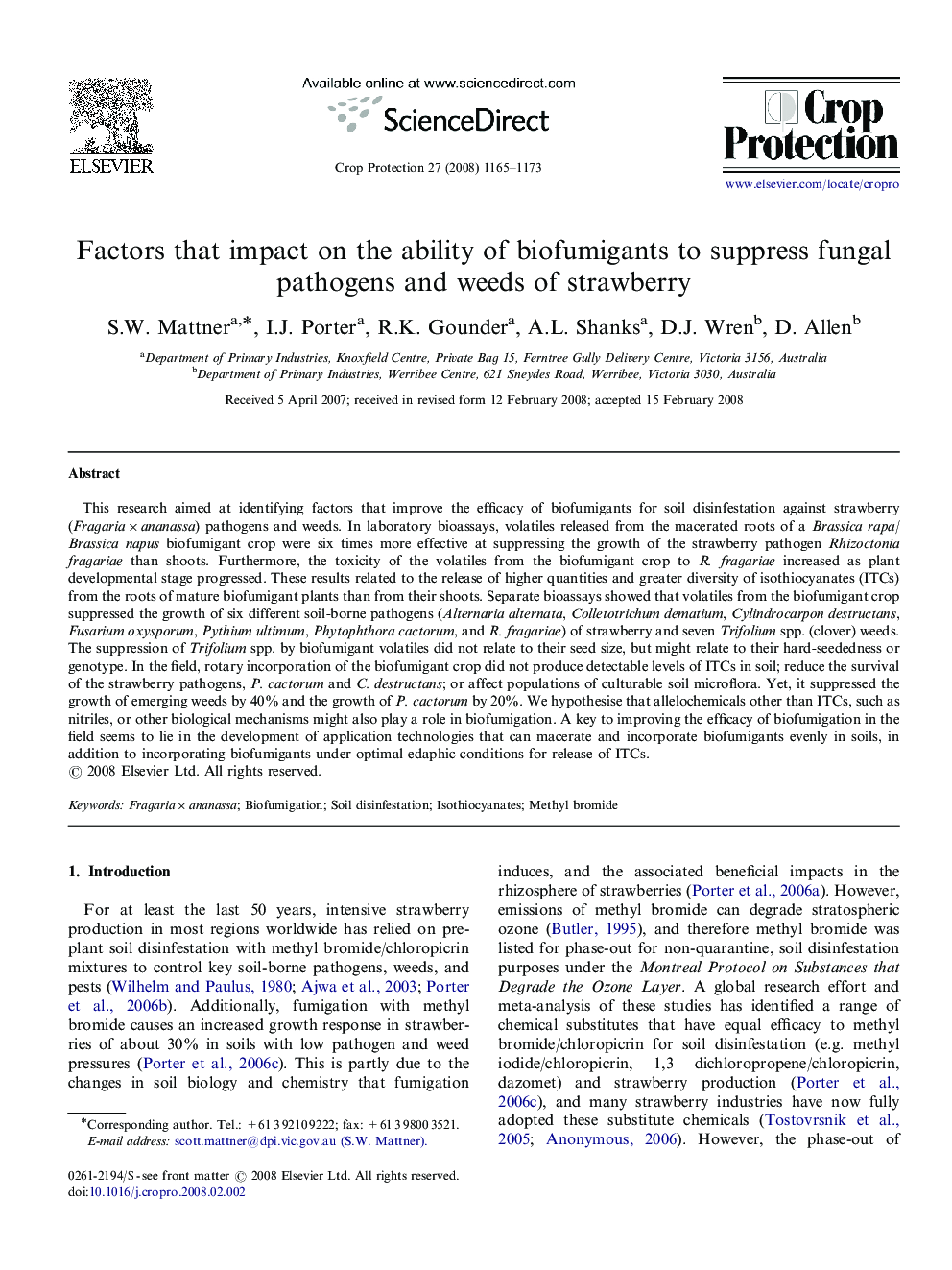| Article ID | Journal | Published Year | Pages | File Type |
|---|---|---|---|---|
| 4507719 | Crop Protection | 2008 | 9 Pages |
This research aimed at identifying factors that improve the efficacy of biofumigants for soil disinfestation against strawberry (Fragaria×ananassa) pathogens and weeds. In laboratory bioassays, volatiles released from the macerated roots of a Brassica rapa/Brassica napus biofumigant crop were six times more effective at suppressing the growth of the strawberry pathogen Rhizoctonia fragariae than shoots. Furthermore, the toxicity of the volatiles from the biofumigant crop to R. fragariae increased as plant developmental stage progressed. These results related to the release of higher quantities and greater diversity of isothiocyanates (ITCs) from the roots of mature biofumigant plants than from their shoots. Separate bioassays showed that volatiles from the biofumigant crop suppressed the growth of six different soil-borne pathogens (Alternaria alternata, Colletotrichum dematium, Cylindrocarpon destructans, Fusarium oxysporum, Pythium ultimum, Phytophthora cactorum, and R. fragariae) of strawberry and seven Trifolium spp. (clover) weeds. The suppression of Trifolium spp. by biofumigant volatiles did not relate to their seed size, but might relate to their hard-seededness or genotype. In the field, rotary incorporation of the biofumigant crop did not produce detectable levels of ITCs in soil; reduce the survival of the strawberry pathogens, P. cactorum and C. destructans; or affect populations of culturable soil microflora. Yet, it suppressed the growth of emerging weeds by 40% and the growth of P. cactorum by 20%. We hypothesise that allelochemicals other than ITCs, such as nitriles, or other biological mechanisms might also play a role in biofumigation. A key to improving the efficacy of biofumigation in the field seems to lie in the development of application technologies that can macerate and incorporate biofumigants evenly in soils, in addition to incorporating biofumigants under optimal edaphic conditions for release of ITCs.
